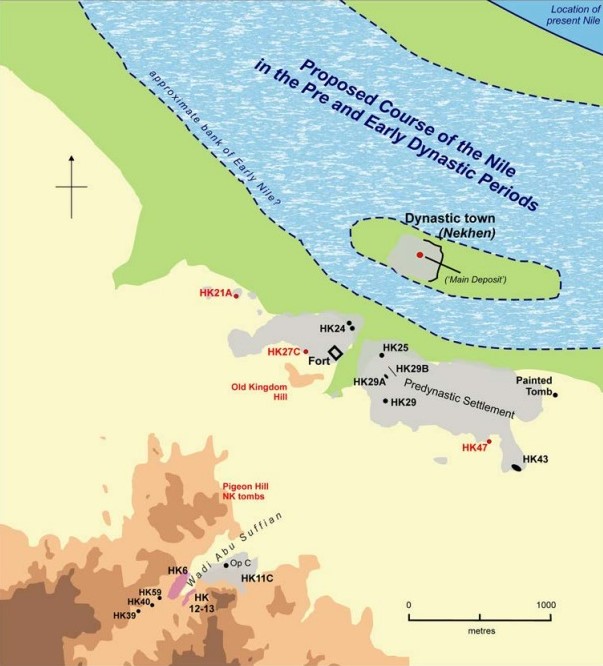
 |
| Hierakonpolis map |
 |
The elite cemetery (HK6) at Hierakonpolis served as a burial ground restricted to the elite. The elite cemetery was in use in the Naqada IC-IIB period (3800-3650BC), but was abandoned in Naqada IIC-D (3600-3300BC). HK6 is unique for the number and variety of domestic and wild animals that were buried there in graves (alone or with humans). Near identical radiocarbon dates from two of animals buried at HK6 indicate that both met their end at the same time: at some point between 3660 and 3640 BC.
The non-elite cemetery (HK43), holding over 500 individuals of Naqada IIB-C period (roughly 3650-3500 BC), have uncovered cutmarks found on the neck vertebrae of 21 individuals, indicating the cutting of the throat and in some cases, complete decapitation. The individuals involved include men and women ranging from 16 to 65 years of age, five of whom (all young men) were also scalped. Several individuals also suffered from fractured skulls, the result of severe blows to the head. Some healed, some were fatal.
HK43 Burial 120, a circular grave, belonged to a woman (aged 35-40 years) found with both arms crossed over her chest and tree bark wrapped tightly around each of the limbs and torso. The bark is from Boswellia (frankincense) as the more likely. When clearing around the skull, it was found that half of the cranium was missing. After reconstructing the skull with pieces found some distance away, the woman had suffered a strong blow to the back left side of her head. As there is no evidence of healing, it would seem that this injury was the cause of death.
In the Naqada IIC period new cemeteries were established on former settlement area along the edge of the flood plain at HK27 (Fort Cemetery), HK31 (Painted Tomb Cemetery) and HK33.
In the Naqada III period the elite cemetery (HK6) came into use again.
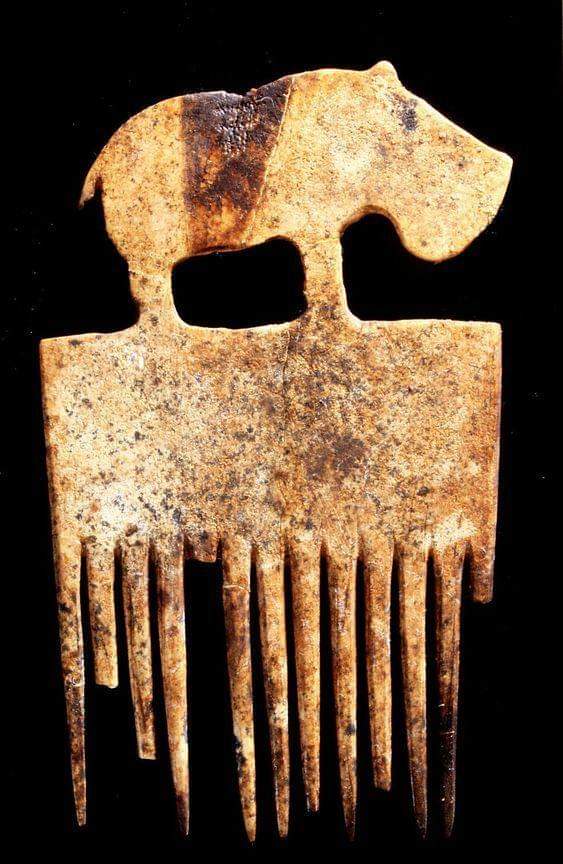 |
| "Hippo comb" from HK6 Tomb 72 at Hierakonpolis |
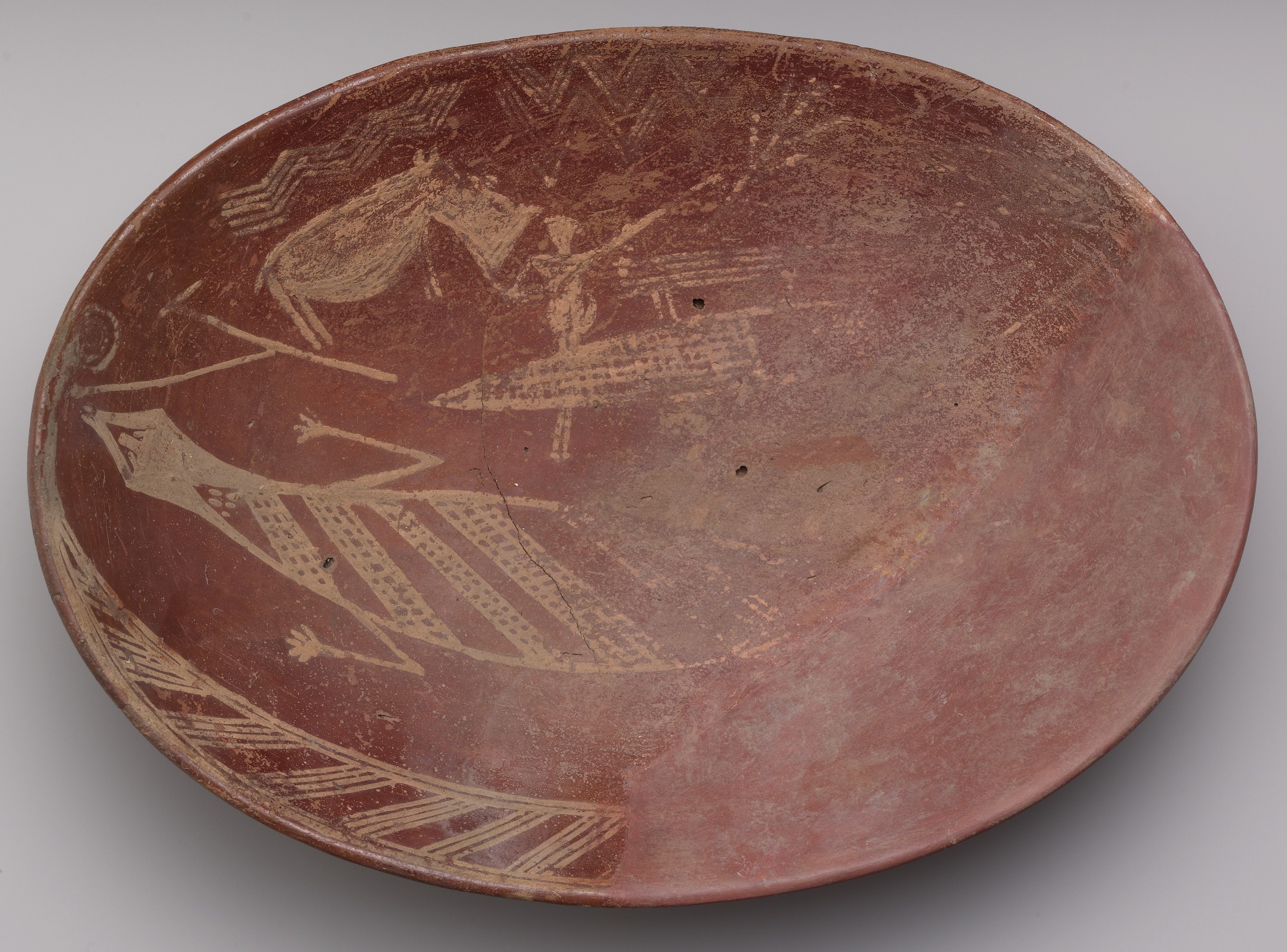 |
| A man standing with a leashed hippo behind a boat and a crocodile on C-Ware bowl, Naqada IA-IIB period |
Below the crocodile, an elongated shape with a round end probably represents the stick associated with mummy S. 293 (Museo Egizio, Torino).
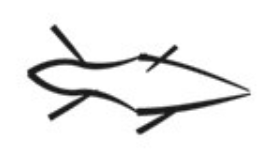 Proto-cuneiform KUSZU2~c (Kušu) = crocodile
Proto-cuneiform KUSZU2~c (Kušu) = crocodile
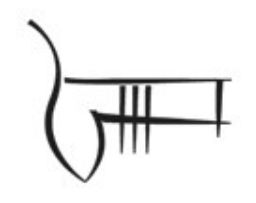 Proto-cuneiform SZAH2~b (Šah); interpreted as "pig" but actually hippo
Proto-cuneiform SZAH2~b (Šah); interpreted as "pig" but actually hippo
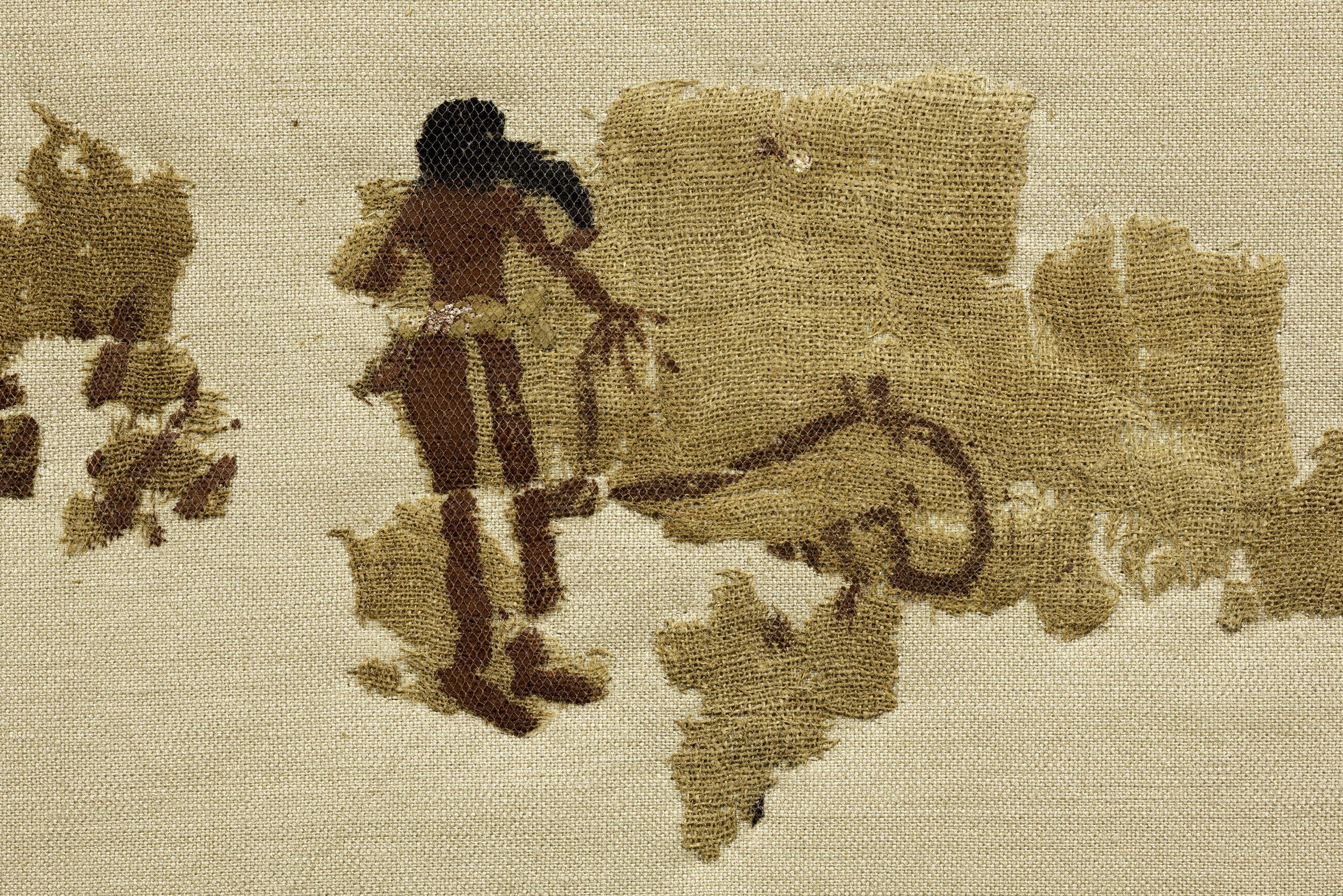 |
| A man fleeing with a leashed young hippo |
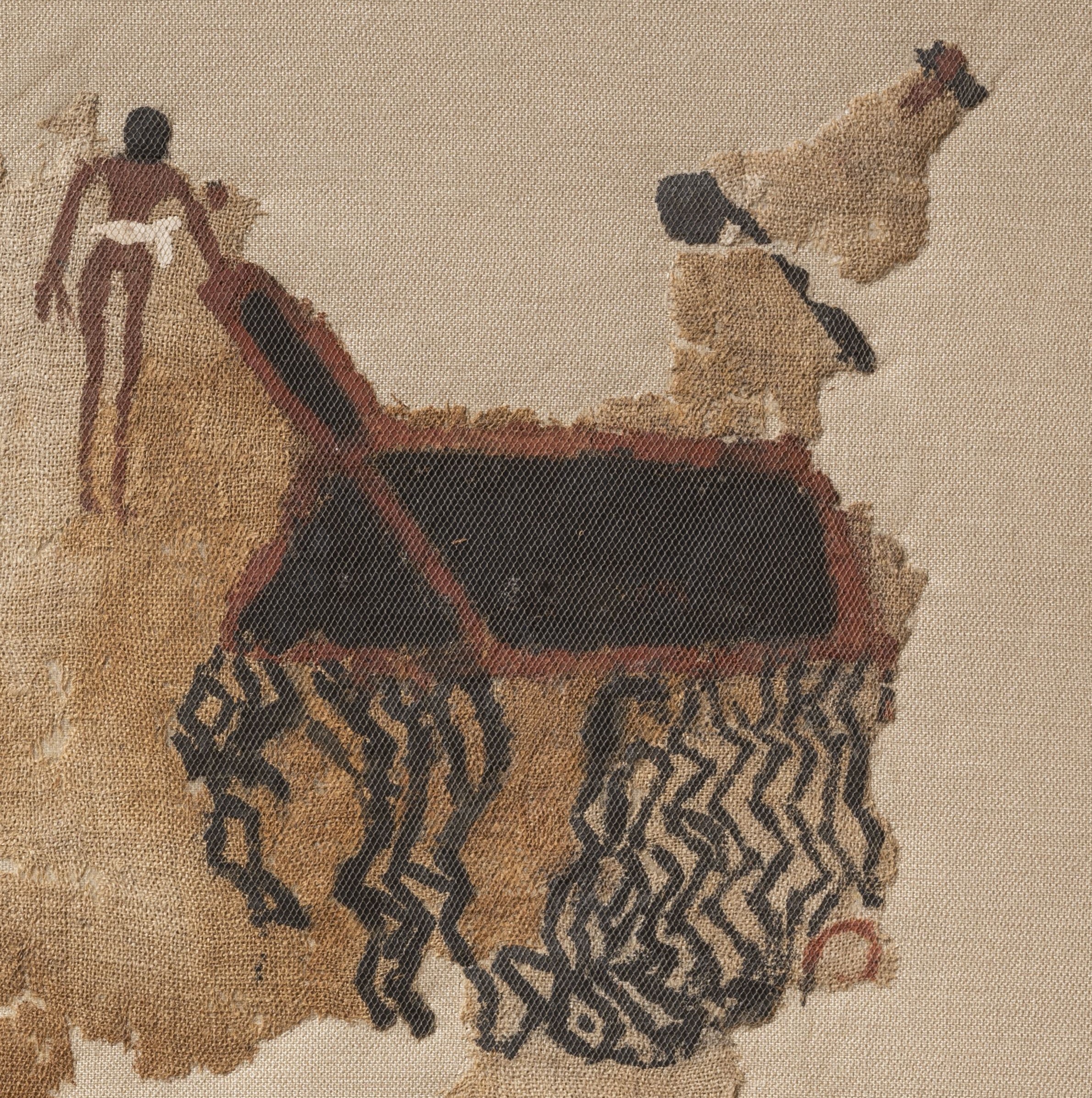 |
| A man fleeing from a house and a stick with a round end (?) |
Gebelein painted linen, Gebelein, ca. 3600 BC
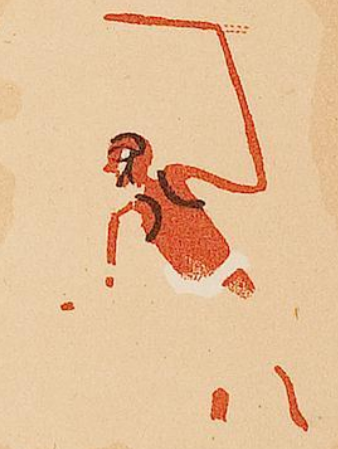 |
| An attacker holding up his stick |
Wall painting from Tomb 100 at Hierakonpolis, ca. 3500-3200 BC
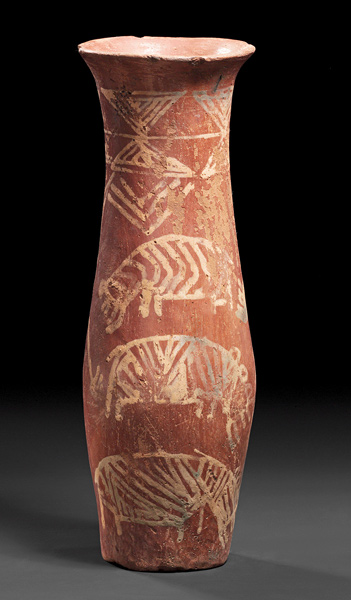 |
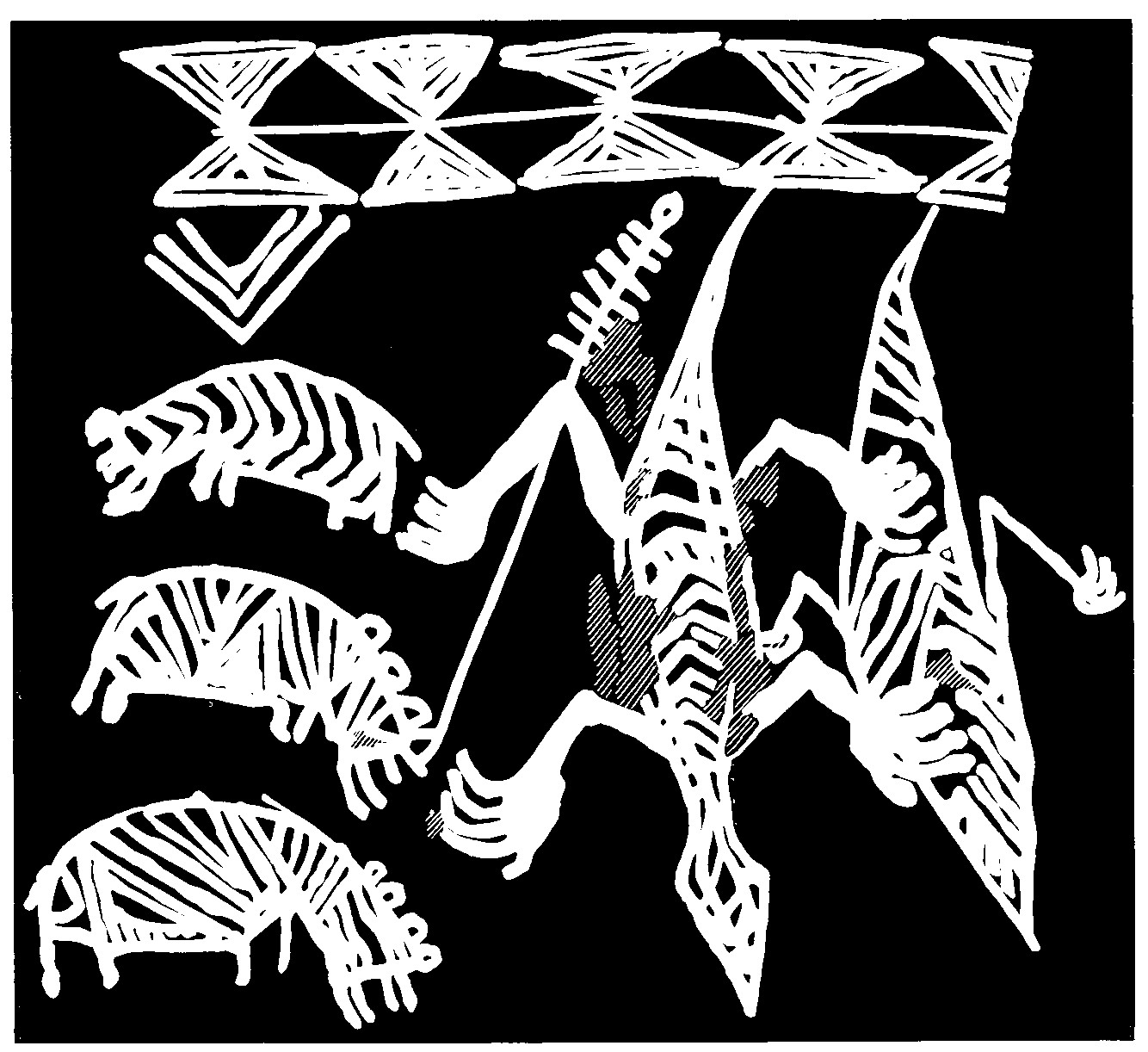 |
| C-Ware bottle, Gebelein (?), Naqada IA-IIB period | Crocodile harpooning one of three hippopotami and the shadow in the Nile River |
In use for over 500 year (Naqada IIA - Dynasty 1), the center of Ceremonial Center (HK29A) at Hierakonpolis underwent several renovations, and the structure was composed in part of a oval courtyard surrounded by a succession of wall trenches, post fences and mudbrick walls.
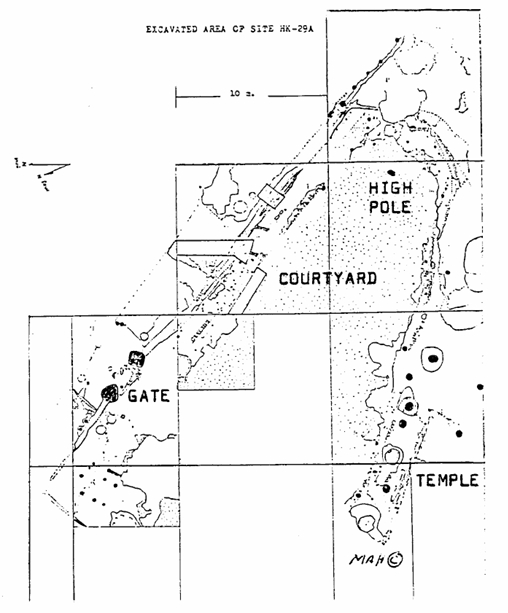 |
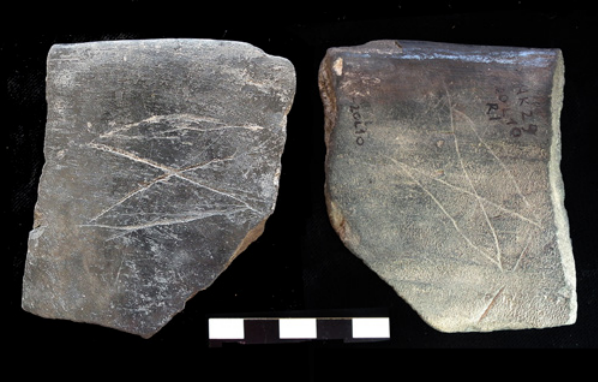 |
| Ostracon incised on both sides from HK29 at Hierakonpolis |
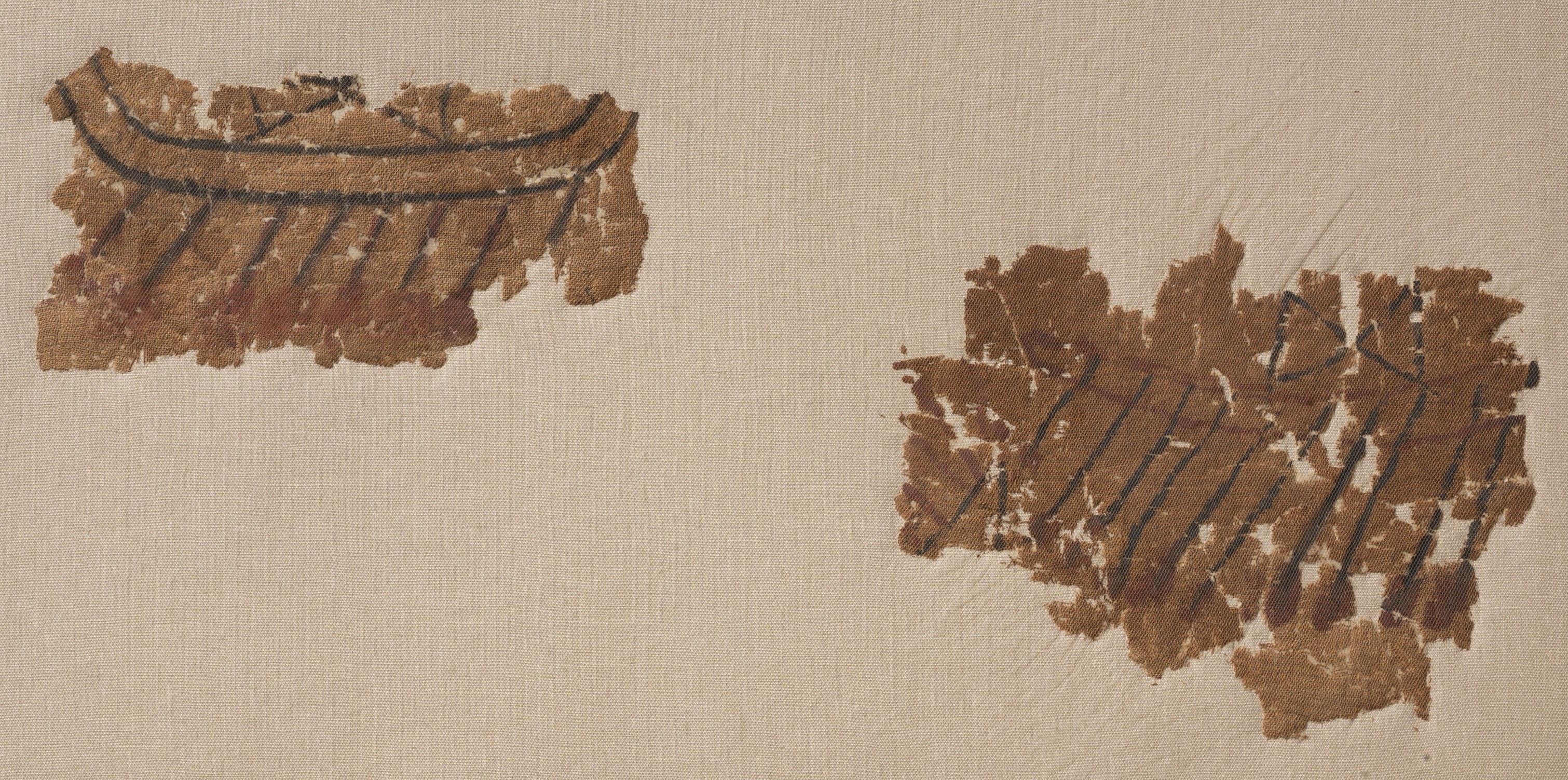 |
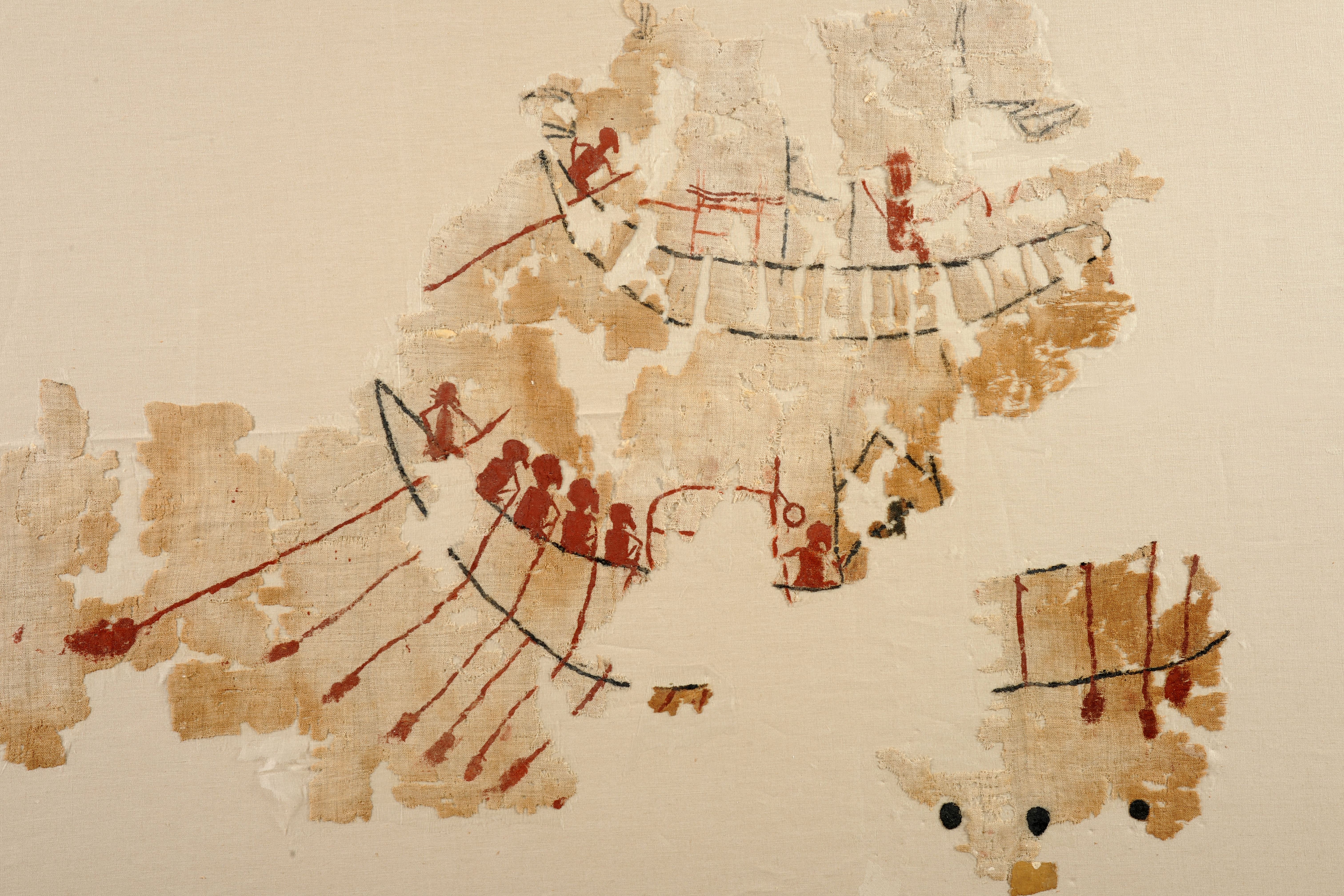 |
| Gebelein painted linen, Gebelein |
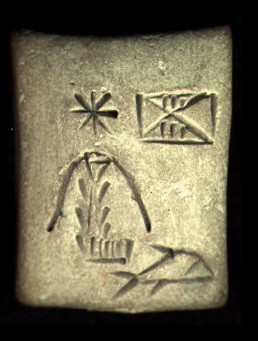 |
| Tag (P002208), Uruk, ca. 3350-3200 BC |
AN |SZU2.EN~a| (cover.lord) DARA4~a1 (red) KU6~a (fish) |
Four potentially domestic donkeys were buried at the elite cemetery (HK6) in Hierakonpolis (one from around Tomb 14 and three babies in Tomb 111 dated to the Naqada III usage of the site).
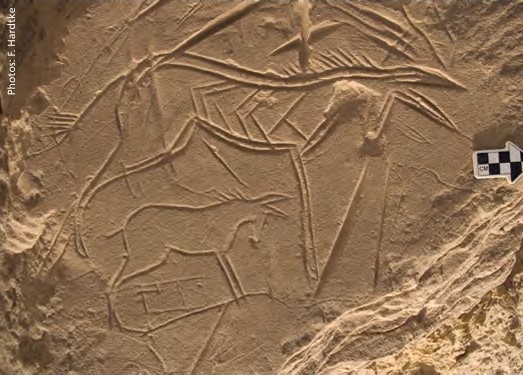 |
| Petroglyph of donkeys at "Donkey Hill" in Hierakonpolis |
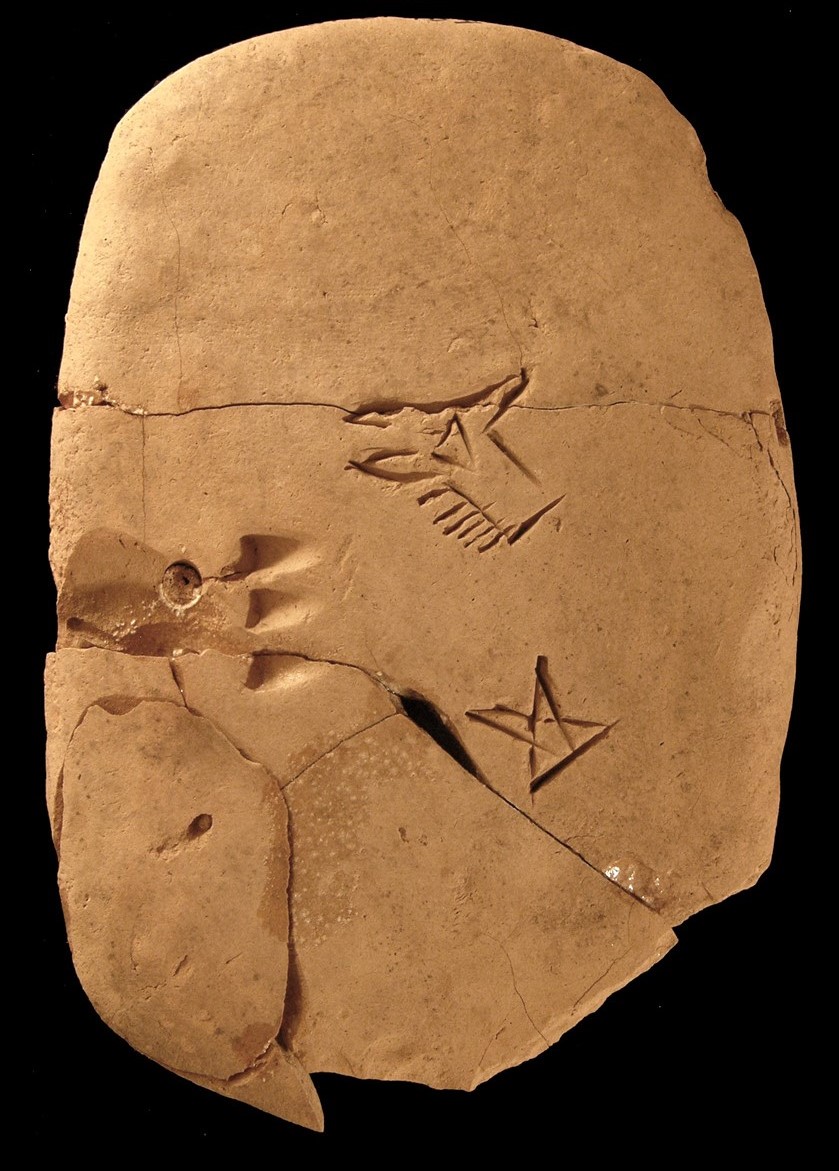 |
| Tablet (P325349), ca. 3200-3000 BC |
UB KISZ (Kiš) |
According to the Sumerian king list, Kiš was defeated; its kingship to E-ana was carried.
Hierakonpolis = Sumerian: An (𒀭), the elite = Sumerian: Kiš
The lord from Gebelein = Sumerian: En
There must have been a battle in which Gebelein defeated Hierakonpolis at some point between 3660 and 3640 BC.
References:
http://www.hierakonpolis-online.org/index.php/nekhen-newsNovember 19, 2024 Takahiko Nakagawa